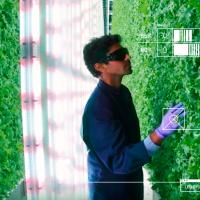Forty-percent of the global population is impacted by water scarcity, and many will be displaced because of it. Yet 80% of the world’s wastewater — produced from flushing toilets, bathing, dish washing, and commercial operations — is dumped back into rivers, lakes, and oceans.
In the U.S., concern over droughts and water pollution have ignited a unique solution for preserving one of our most vital resources — advanced wastewater treatment for human consumption, also known as direct potable reuse.
Wastewater Treatment 101
Although nature’s ability to cope with water pollution is uncanny, that’s no reason to flood our waterways with contaminants. In the U.S., the Environmental Protection Agency estimated that improper wastewater treatment occurs in up to 20% of facilities in small communities.
One report found that Montreal, Canada dumps approximately 3.6 billion liters of raw sewage into the St. Lawrence River each year. The dangers of water pollution combined with the fact that the global demand for water is expected to be one-third higher by 2050, means it’s time we start paying more attention to wastewater treatment.
Wastewater treatment is the process of removing contaminants from used water so that it can be reintroduced into the environment, reused for purposes like irrigation, or eventually — reused as drinking water. A wastewater treatment plant applies multiple processes to remove sewage and other impurities from used water.
The first step is typically sedimentation, where solids that are denser than water accumulate at the bottom of basins, designed to remove settleable matter from liquid. Once solid waste has been removed, the water moves into an oxidation process for disinfection. In chemical oxidation, chlorine is often used to kill bacteria and pathogens.
In the final step of the wastewater treatment process, the water is sent to a “polishing” phase, which can include carbon filtering to remove any remaining contaminants. Once this polishing phase is complete, the water is clean enough to re-enter the water cycle.
Additional steps can be taken to further purify reclaimed water for human consumption, but very few facilities in the U.S. are currently doing so.
Wastewater so Clean, You Can Drink It
The city of El Paso, Texas is considered high desert, with the region averaging just nine inches of rainfall per year. This lack of rainfall creates a perpetual drought, requiring city officials to constantly innovate to keep the water flowing.
Now, the city is embarking on an endeavor that might be unsettling to some. They’re creating an entirely closed loop where wastewater arrives in a reclamation facility, passes through an advanced filtration system, and reenters the drinking water supply.
Throughout history, public acceptance of a closed loop system has been weak. Most people don’t like the idea of drinking flushed toilet water. But El Paso’s new approach with their Advanced Water Purification Facility is proving that it’s possible to gain citizens’ support by cultivating trust within the community.
This is only El Paso’s most recent step in taking preventative measures toward water security. In 2007, the city constructed the largest inland desalination plant in the country, which treats salty water in its aquifer. Citizens have also been incentivized to use less water with rebates for replacing grass with turf, installing high-efficiency washing machines, and low-flow toilets.
Over the last 30 years, water use in El Paso has dropped by 35%, and with results comes trust. “That’s one of the reasons why we’re viewed as a model for water resources planning across the country,” explains Gilbert Trejo, the chief technical officer at El Paso Water.
The city’s water purification process involves three additional stages on top of traditional wastewater treatment. First, reverse osmosis membranes remove contaminants from the water. Next, ultraviolet light is applied with the addition of hydrogen peroxide to enhance disinfection. Lastly, the water passes through granular activated carbon, which is proven to be highly effective in removing chemicals like hydrogen sulfide that give water unpleasant odors.
El Paso Water also has safety protocols that go above and beyond what is required by the law. Typically, water safety monitoring is performed on a point-in-time basis, where samples are taken at different intervals and tested for quality. But the El Paso plant will have real-time, constant quality monitoring.
The result is a sustainable, drought-proof resource for purified drinking water — about eight million gallons of it per day. The plant is currently in the design stage and Trejo hopes to begin construction in 2024.
“We have 100 million gallons of wastewater that flow to our facilities every day, and this is true for facilities all over the country,” Trejo says. “I think that once we show we can treat this water reliably and safely… it’s going to open a lot more doors to do this at our other wastewater treatment plants and our water reclamation facilities.”
About 40% of the U.S. is currently experiencing a drought. But if other major desert cities like Phoenix and Las Vegas follow suit after El Paso’s facility launches, direct potable reuse could become a key solution to sustaining growing populations.
For more interesting news about the people and ideas that are changing our world, subscribe to Freethink.


